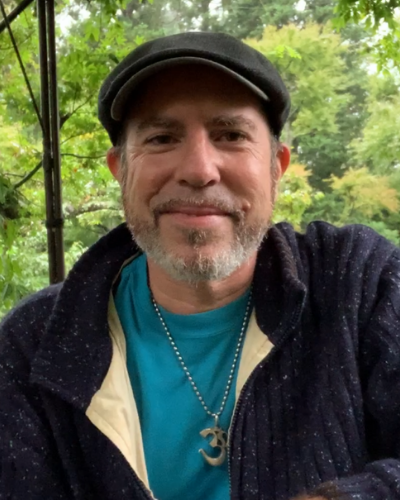Jhana in Pali is Dhyana in Sanskrit. In English this is most often understood as meditative absorption.
I was there before I wasn’t. And it took a while to get back. And it wasn’t an easy road.
The Buddha is on record as teaching that in order to enter the first jhana, one must first remove the five hindrances (sense desire, ill-will, sloth, fear, doubt). All traditions which employ the terms jhana or dhyana advocate active concentration to achieve meditation. My step-by-step for entering the first jhana was as follows:
- Identification of the goal, process, obstacles, paths and teachings through book study.
- Self-inquiry and inventory to identify my own tendencies and proclivities.
- Took massive action by going on a pilgrimage across the world as soon as I finished high school until finally arriving at the hermitage of my Guru when I was 24.
- Watched and listened very carefully to one who had walked this path before me.
- My master engaged me with deep discourse, deeper conversation, even deeper analysis and introspection.
- Fear was removed rather instantaneously, magically almost, with the realization that I wasn’t lost after all, that what I was scrambling to recall was in fact my own true Self.
- Doubt took longer as I was overwhelmed with book and experiential knowledge.
- The Master gave me more to read, more to do, until I exploded, got fed up, gave up the search, lost faith and surrendered.
- Satisfied all of my sense desires in one way or another, recognizing the impermanence of the same.
- Learned to use my eyes to see the world and the people with equanimity.
- Lost myself in carrying water from the well and tending to the fire.
I entered the first jhana without really trying to enter anything at all. The state of being was such that I just came to that subtly. The five hindrances had been abandoned. The five factors viz. applied and sustained thought, bliss, happiness and one-pointedness of mind had been somehow acquired.
12. At the ten-year mark in my discipleship, the Master suddenly one day ousted me from the hermitage quite abruptly telling me to go to a neighboring town and be on my own through the winter.
13. Seemingly off-balance, I wasn’t surprised that I fared well, sitting with the babas in the town square, their style had become my own. My thought process was not what it had been when I’d first arrived in the Himalayas a decade earlier.
14. I was a healer now, a benevolent benefactor to those in need. Sustained application of thought had been replaced by a natural tendency to easy and correct acquisition of knowledge from the ether or wherever it was coming from. This was me now. And I was happy, satisfied. Indeed, the angel of bliss that my name, Devananda, implied.
Thus did I know the second jhana.

15. Several weeks into my exile, I decided for some reason that the Master’s hermitage was none other than my very own and took it upon myself to gather puja tools and offerings, go back to the Master’s temple adjacent His cottage and camp out on the floor next to the dhuna (fireplace). It was deep winter but I knew the fire would see me through the night easily. The Master had explicitly told me to stay away, but I knew beyond any doubt that I was absolutely correct in my decision. And I had a lovely party with one servant only to aid me with the sacrifices. I slept very comfortably on a single, thick wool blanket and knew nothing but the deepest sense of love of being. When the Master came upon me in the morning He shouted like anything. “You should not be here. I told you to stay away.” His face was drawn into a fierce mask. I stood before Him quiescently and in complete deference and love told Him that I would immediately be on my way. For the briefest moment I saw surprise and delight glimmer behind His pupils. Then He screwed up His face and intonation in that way designed to pull at my deepest unknown fears and with a scowl said simply “I know all of your tricks”. But He was talking to something behind me, beyond me, deep within the history of me. And I knew it. Though I felt it. I left the temple and sat myself in the outer garden, not yet wanting to leave that place of my childhood innocence reborn. The Master followed me out of the temple and watched me calmly for a few minutes. And I watched Him. And felt the sunshine on my head and felt nothing but deep peace, love and abiding gratitude that He gave me a few gentle minutes.
Here I knew the third jhana – subtle mindfulness, subtle joy and subtle equanimity.
16. First He gave me gyan. Then the kriyas. His go to sources of reference – the Gita, Ramana Maharishi, Adi Shanakara, but not often referencing other and seldom giving name to whatever activity He would assign to my engagement, certainly not sequence, order or any other goal but the unequivocal knowledge of Self. I knew the ritual, the magical and the miraculous, all in the name of the Father and the Mother. But never was there a particular method to the development or operation of a Me. He had me stay with one mantra for 15 years with unspecified intention, and then one day, five years after the above anecdote, He gave me another. With a simple reference to neti neti, not this or this, I was to sit myself in applied, concentrated meditation, negating absolutely everything until Ultimate Truth dawned. That was only the second time He’d instructed me specifically to go sit in meditation. The first is another story which would give me insight into the workings of applied consciousness and its interaction with the Greater Nature. But this time, I was to just let go of everything until Silence.
17. Three years later we were worshiping in front of the Mother Temple at the hermitage. Standing in the garden grounds I held the dhoop between my fingers and simply turned my empty presence towards Her. I stood there for a bit, the gentle tendrils of scent wrapping themselves around me. I stood there, empty. Very quiet. No movement inside. And I felt very good about that, in a non-feeling kind of way. And then the Master was next to me and He said, “Open up. Tell Her anything you want to tell. Show anything you want to show.” I don’t recall now how I did that next, but I did, and it was fine. I felt good with that, too. It’s not exactly matter-of-fact, but close. Certainly not apathy, jeez, but kinda… It’s just all, well, rather fine as it is.
That’s when I understood the fourth jhana – equanimity.
I write this for you twelve years after the above anecdote. Some Buddhist traditions speak of even higher states of jhana; I have elaborated on my step by step through the best known four.

…is a Saiva Tantrika, Gyana Yogi and founder of Uma Maheshwara Yoga & Ayurveda. David has an MA in Semiotics, lives in Japan with his family and works as a coach in L & D, devoting his time to developing science-based tools and programs that help people reach the fullest potential of the human condition.
Discover more from REAL YOGA
Subscribe to get the latest posts sent to your email.


